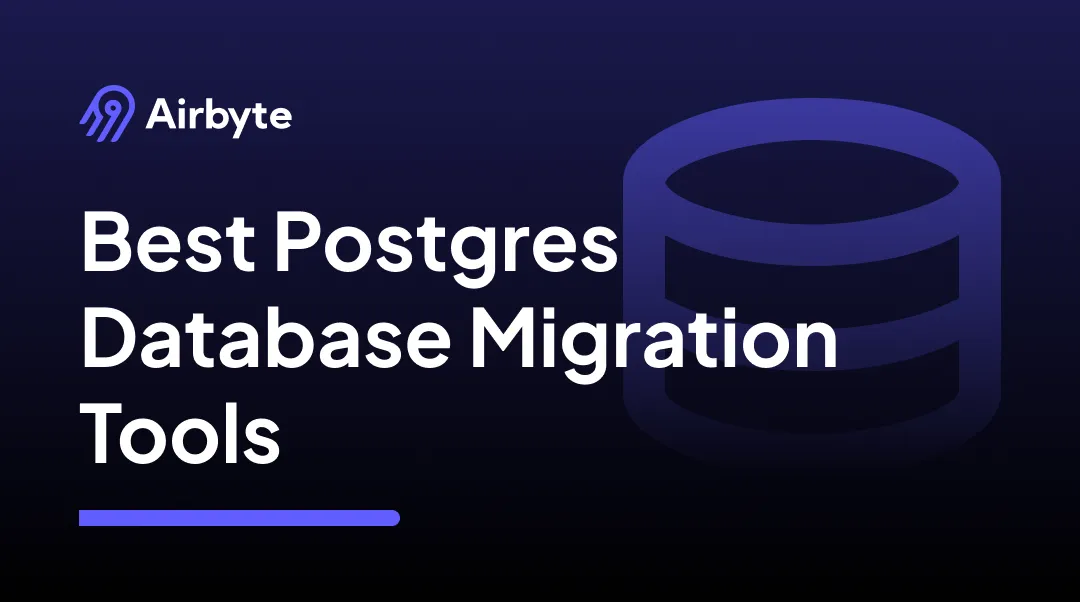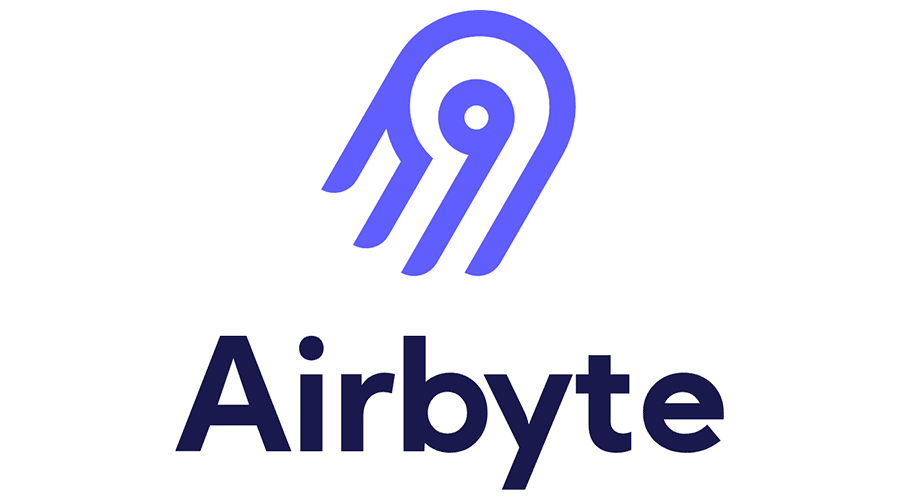Best 6 Postgres Database Migration Tools For 2026
Summarize this article with:


In the olden days, data was collected and stored manually in files and legacy systems. Even today, organizations store some data in older, outdated systems. Migrating your huge datasets into a robust database system is the need of the hour. A relational database keeps your data organized and up-to-date, offering you automated features that save time and effort.
One of the popular database migration destinations is Postgres. To move large chunks of data into Postgres, you require efficient solutions. This article will delve into the popular Postgres database migration tools that will help you make the transition swiftly and securely.
What is Postgres?
The POSTGRES project began at the University of California, Berkeley, in 1986, and today, PostgreSQL is well-known as a robust open-source object-relational database system. It is renowned for its versatility in handling complex data workloads while ensuring you get the utmost data integrity.
The solid architecture and extensive feature set make Postgres a popular database among business organizations. You will find a dedicated open-source community committed to continuously enhancing the platform’s performance and innovation. Given Postgres’s reliability and ability to adapt to diverse business needs, you can migrate your vast datasets here and get access to powerful and scalable solutions.
Why Should You Migrate Data to Postgres?
Although several types of databases are available, Postgres is still widely adopted by several organizations. Take a look at some of the reasons why you should strongly consider moving data into this database solution:
- Extensibility: With Postgres, you can define custom data types, create your own functions, and seamlessly integrate code from various programming languages without requiring database recompilation.
- SQL Standard Compliance: Postgres prioritizes compatibility with SQL Standards and currently adheres to a significant portion of the SQL:2023 Core standard.
- ACID Compliance: ACID stands for Atomicity, Consistency, Isolation, and Durability. This standard is critical for maintaining data integrity and transaction reliability in structured data environments. Postgres has been ACID compliant since 2001, providing you with data security and stability at all times.
- Comprehensive Feature Set: Postgres has a vast array of data features and configuration options. One notable feature includes Full Text Search, where you get advanced search capabilities and matching options on textual data. PostGIS, a geospatial database extender, is another well-known feature.
- Extensions and Applications: The Postgres community extensively participates in improving the platform’s functionalities. It has resulted in the creation of high-quality extensions and applications that augment the core Postgres software by catering to diverse use cases.
Suggested Read: Top Data Migration Tools
Best 6 Tools for Postgres Database Migration
Now that you are aware of what Postgres has to offer, you will want to know how you can migrate your data there. A few tools offer secure and efficient data pipelines to help you with Postgres database migration. Take a look at some of the top platforms:
Airbyte

Airbyte is one of the leading data integration and replication platforms in 2025. This platform offers you an extensive library of 350+ pre-built connectors, where you can also find a dedicated PostgreSQL connector.
One of the best features of Airbyte is that it allows you to extract data from multiple sources. You can set your destination as Postgres and directly consolidate all your datasets in a single data pipeline. However, if you need to configure a source that you cannot find in the connectors library, you can create a custom connector through the Connector Development Kit (CDK).
Moreover, Airbyte provides you with CDC capabilities, where each change made to your dataset gets captured. Thus, your Postgres database stays updated without additional effort, and you can use the comprehensive features to analyze and understand your data better.
You can use this platform to migrate your database for free for 14 days. However, to deploy Airbyte throughout the organization and use all its offerings for the long term, get in touch with their sales team.
Ora2Pg

Ora2Pg is a robust database migration tool designed to move your Oracle or MySQL databases to PostgreSQL seamlessly. With its user-friendly interface and comprehensive set of features, the platform is adept at catering to individuals as well as large business enterprises.
Key Features:
- Export Options: You can migrate your full database schema into Postgres. It includes tables, views, sequences, indexes with their unique, primary, and foreign keys, and constraints with Ora2Pg. You can also export predefined functions, triggers, procedures, range/list partitions, and subpartitions.
- Migration Cost Assessment: To achieve a comprehensive assessment of migration costs, Ora2Pg thoroughly inspects database objects, stored procedures, and functions. The tool has a specialized content analysis mode to identify elements or PL/SQL code that may pose challenges during automatic conversions.
Pricing: Since Ora2Pg is an open-source tool, it is freely accessible to everyone.
💡 Suggested Read: Data Migration Tools
pgloader
pgloader is a database migration tool licensed under PostgreSQL. It offers seamless data loading into Postgres through the continuous migration feature, where your data gets loaded directly from various sources. pgloader can also simultaneously handle the data and schema part during migration through a single automated command.
Key Features:
- Versatile Data Loading: pgloader provides support for a variety of file-based formats, such as CSV, dBase files (db3), IBM IXF files, and fixed column formats. You can also directly download source files or archives via HTTP, as pgloader is compatible with zip, tar, and gzip file formats.
- Batch Processing: This database migration tool utilizes the COPY streaming protocol to load data into Postgres. However, in the method, if there is a single error in one of the rows, your entire dataset will get rejected during migration. To mitigate the issue, pgloader divides your dataset into batches of 25,000 rows, allowing for isolated error handling and better memory management.
Pricing: pgloader is an open-source free tool.
Stitch

Stitch is one of the prominent data integration platforms that offers you 140+ connectors to popular sources and destinations. This tool has a pre-built connector to PostgreSQL, allowing you to directly load data into this database without writing a single line of code.
Key Features:
- Automatic Scaling: Stitch has a high-availability infrastructure that adheres to industry best practices of scaling and data pipeline performance. Thus, you can process a huge number of records each day and adjust your data volumes dynamically without workload management concerns.
- Support Team: With Stitch, you get an experienced and responsive support team that you can dial whenever you need a resolution for errors or issues. Additionally, if you have an Enterprise account with them, you also get a dedicated account manager to optimize your data stack.
Pricing: Stitch offers three monthly pricing plans: Standard, Advanced, and Premium, priced at $100, $1,250, and $2,500, respectively.
Aiven

Aiven is a reliable data platform that offers the aiven-db-migrate tool, an open-source project on GitHub for Postgres database migration. The tool conducts a schema dump and migration to ensure schema compatibility with your database. The default migration method of this tool is logical replication, where the two databases remain synchronized until replication into Postgres is interrupted.
Key Features:
- Command Line Interface Tool: With Aiven, you get an installable CLI tool, aiven-client, that helps you interact with all other services of the platform. This tool has all the functionalities you can find on Aiven’s web console. The platform actively maintains and updates it, bringing you regular feature enhancements.
- Metrics Integration: Through Aiven’s metrics integration feature, you can transmit advanced telemetry data to your Postgres database. Telemetry automatically gathers and migrates data collected from remote sources using sensors and other devices. Advanced telemetry service offered by Aiven can help you conduct in-depth analysis to identify performance issues.
Pricing: Aiven is an open-source tool with no charges for its use.
pg_chameleon

pg_chameleon is a MySQL to PostgreSQL replication tool developed in Python 3.5+. It utilizes the mysql-replication library to extract row images from your MySQL database, converting them into JSON objects. These JSON objects are then decoded by a pl/pgsql function and applied to your Postgres database.
Key Features:
- Schema Replication: pg_chameleon is capable of reading and replicating data from multiple MySQL schemas to your target database in Postgres. This feature works even when your source and target schemas are different names. However, if there are errors in your tables, they are automatically excluded during the replication.
- Data Type Support: This database migration tool supports various data types, including enumerated and binary data types. It also provides fundamental Data Definition Language (DDL) support through CREATE, ALTER TABLE, DROP, TRUNCATE, and RENAME operations.
Pricing: pg_chameleon is a free tool that any organization can use.
The Final Word
With advanced features and the ability to handle large volumes of data, Postgres has garnered one of the top spots for migrating your database. Additionally, Postgres is equipped to handle semi-structured and unstructured data, helping you bring together diverse data types under one platform. Once your business data is consolidated, you can conduct analysis better by creating predictive models that help you make projections for the future.
💡Suggested Reads
What should you do next?
Hope you enjoyed the reading. Here are the 3 ways we can help you in your data journey:



Frequently Asked Questions
What is ETL?
ETL, an acronym for Extract, Transform, Load, is a vital data integration process. It involves extracting data from diverse sources, transforming it into a usable format, and loading it into a database, data warehouse or data lake. This process enables meaningful data analysis, enhancing business intelligence.
This can be done by building a data pipeline manually, usually a Python script (you can leverage a tool as Apache Airflow for this). This process can take more than a full week of development. Or it can be done in minutes on Airbyte in three easy steps: set it up as a source, choose a destination among 50 available off the shelf, and define which data you want to transfer and how frequently.
The most prominent ETL tools to extract data include: Airbyte, Fivetran, StitchData, Matillion, and Talend Data Integration. These ETL and ELT tools help in extracting data from various sources (APIs, databases, and more), transforming it efficiently, and loading it into a database, data warehouse or data lake, enhancing data management capabilities.
What is ELT?
ELT, standing for Extract, Load, Transform, is a modern take on the traditional ETL data integration process. In ELT, data is first extracted from various sources, loaded directly into a data warehouse, and then transformed. This approach enhances data processing speed, analytical flexibility and autonomy.
Difference between ETL and ELT?
ETL and ELT are critical data integration strategies with key differences. ETL (Extract, Transform, Load) transforms data before loading, ideal for structured data. In contrast, ELT (Extract, Load, Transform) loads data before transformation, perfect for processing large, diverse data sets in modern data warehouses. ELT is becoming the new standard as it offers a lot more flexibility and autonomy to data analysts.
